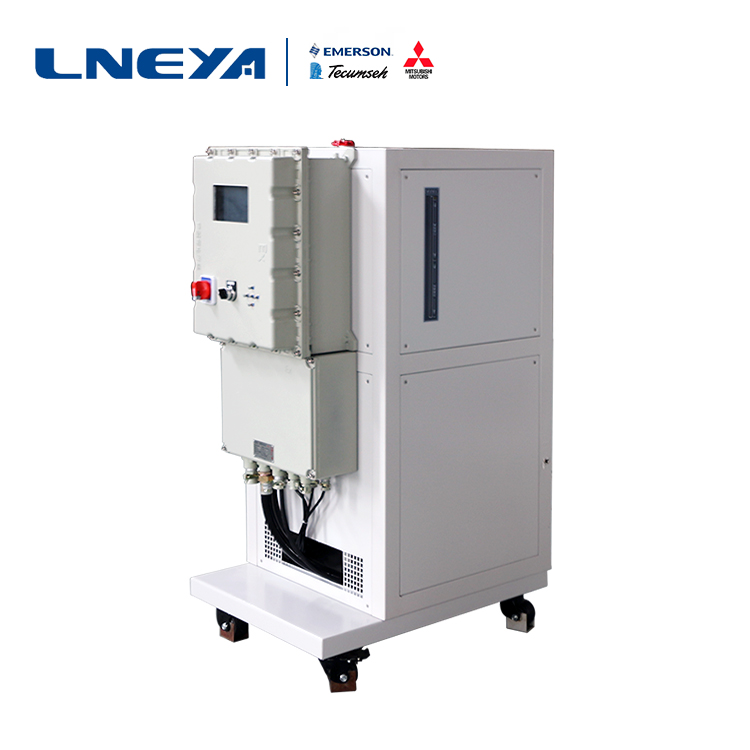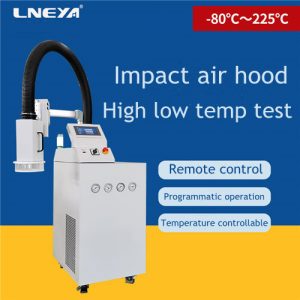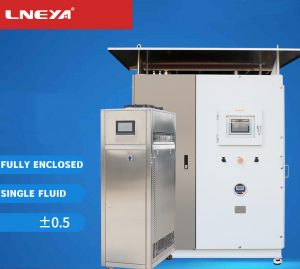Instruções de esvaziamento e enchimento do aparelho de teste linear de mudança rápida de temperatura
Before starting the linear rapid temperature change tester, check whether the relevant protective measures are in place, such as fire protection, protection, leak prevention and other tools. Check whether the power supply is in place according to the power supply installation and equipment grounding, whether the phase sequence is correct, and whether the grounding is good. Then power on the equipment, and then check whether the relevant valve is open. Otherwise, the circulating pump will be blocked and burned out, or the pipeline pressure will be too large to crack the pipeline.
The linear rapid temperature change tester drains the liquid, and the liquid addition and emptying are performed simultaneously. The linear rapid temperature change tester device is located at the upper end of the device, closed clockwise, and opened counterclockwise. The linear rapid temperature change tester exhaust valve is located on the side of the unit. Use the auxiliary tool to insert a hole, turn it clockwise, and open it counterclockwise.
The linear rapid temperature change tester can cause damage to the circulation pump if it is not filled with the circulating heat transfer medium in accordance with the following simple operation guide. The linear rapid temperature change tester needs to pay attention to the necessary protective measures, wearing rubber gloves, goggles, eye wash, etc., to ensure that the thermal medium meets the system requirements (temperature range, viscosity, corrosion, toxicity). Check the medium to ensure no precipitation, no color, no corrosiveness. If a small amount of sediment should be settled stably, the precipitate should not be added to the system when a heat transfer medium is added. The linear rapid temperature change tester should be splashed when dumping, and always pay attention to the sight glass on the side of the device to prevent the overflow into the electrical cabinet and damage the equipment and form pollution. Before adding the liquid, check whether the relevant pipeline is completely open. Whether the liquid port is closed.

If the linear rapid temperature change tester mixes different types of thermal fluid in the thermal fluid circulation, the linear rapid temperature change tester will be damaged. Different types of thermal fluids (eg mineral oil, silicone oil, synthetic oil, water, etc.) cannot mix with each other in the thermal fluid circulation. When replacing other types of thermal fluid, the thermal fluid circulation must be flushed. The previous thermal fluid is not allowed to remain in the thermal fluid circulation.
The linear fast temperature change tester’s emptying liquid is as shown above. After the process of emptying and adding liquid, the power can be turned on and the linear rapid temperature change tester can operate normally.
Recomendações relacionadas
-
How to choose the model of the temperature control device of the lithography machine?
884How to choose a suitable industrial chiller, and what aspects should be paid attention to in the design of the unit?1. Choose air-cooled or water-cooled temperature control device for lithography machineThe condensation methods of industrial chil...
Ver pormenores -
Utilização e manutenção do sistema de controlo da temperatura do laboratório/bioengenharia
9351. Leia atentamente o manual do equipamento antes de o utilizar, familiarize-se com o processo de funcionamento e as instruções principais e utilize-o em estrita conformidade com as condições especificadas no manual. 2. Ao deslocar a temperatura do laboratório/bioengenharia...
Ver pormenores -
Aplicação do sistema de arrefecimento e aquecimento do reator encamisado nas reacções químicas
1032Na indústria química, os dispositivos de resfriamento e aquecimento de reatores encamisados são amplamente utilizados em várias reações químicas. Aplicação de dispositivos de refrigeração e aquecimento de reatores encamisados em várias reações químicas: A polimerização é um ...
Ver pormenores -
What if the cooling rate of the cooling and heating temperature control system of the reactor slows
1044LNEYA cooling and heating temperature control system is a laboratory instrument and equipment for temperature control of supporting reactors in pharmaceutical and chemical laboratories and other industries. It adopts a fully closed circulation pip...
Ver pormenores
 LNEYA Refrigeradores industriais Fabricante Fornecedor
LNEYA Refrigeradores industriais Fabricante Fornecedor












